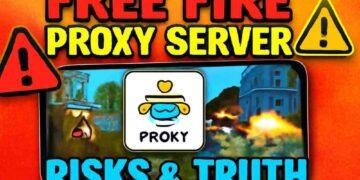FBA vs. FBM 2025: Ultimate Showdown to Choose the Best Fulfillment Strategy for Amazon Sellers
FBA vs. FBM 2025 is the hot debate among Amazon sellers this year. Whether you’re a beginner or a pro, choosing the right fulfillment method can make or break your success on Amazon. This guide will compare both strategies, break down the pros and cons, and help you decide which one is best for your goals in 2025.
What is FBA?
Fulfillment by Amazon (FBA) is a service where Amazon handles storage, packaging, shipping, and even customer service for your products. You simply send your inventory to Amazon’s fulfillment centers, and they take care of the rest. When a customer places an order, Amazon picks, packs, and ships the item often with Prime shipping, which boosts visibility and trust. They also manage returns, refunds, and 24/7 customer support.
FBA vs. FBM: Key Differences
Choosing between Fulfillment by Amazon (FBA) and Fulfillment by Merchant (FBM) depends on your business model, control preferences, and growth goals. Here’s a breakdown of the key differences in 2025:
| Feature | FBA (Fulfillment by Amazon) | FBM (Fulfillment by Merchant) |
|---|---|---|
| Who Handles Shipping? | Amazon | You (or your 3PL) |
| Prime Eligibility | Yes – automatic with FBA | Only with Seller-Fulfilled Prime (SFP) |
| Customer Service & Returns | Managed by Amazon | Handled by you |
| Storage Location | Amazon fulfillment centers | Your warehouse or third-party logistics (3PL) |
| Fees | Fulfillment, storage, and returns fees | Lower Amazon fees, but shipping/handling costs fall on you |
| Control Over Packaging | Limited | Full control |
| Scalability | Easy to scale quickly | Requires strong operations setup |
| Branding Opportunities | Limited (Amazon branding) | More flexibility with custom packaging and inserts |
Pros and Cons of FBA
Fulfillment by Amazon (FBA) offers powerful benefits, but it’s not without trade-offs. Here’s a clear look at what you gain and what to watch out for in 2025:
Pros of FBA:
-
Prime Eligibility = Higher Sales
Products automatically qualify for Amazon Prime, attracting loyal customers and increasing conversion rates. -
Hands-Off Logistics
Amazon handles storage, picking, packing, shipping, and customer service—freeing you to focus on scaling your business. -
Faster Delivery
Access to Amazon’s world-class shipping network ensures fast and reliable delivery. -
Better Buy Box Odds
FBA listings tend to win the Buy Box more often due to Amazon’s trust in their fulfillment standards. -
Scalability
Easily scale without managing your own warehouse or staff.
Cons of FBA:
-
High Fees
Fulfillment and storage fees can eat into profits, especially for low-cost, slow-moving, or oversized items. -
Less Control Over Inventory
You lose visibility and control over how products are stored, packed, and shipped. -
Strict Compliance & Penalties
Mistakes in labeling, packaging, or account health can lead to penalties or suspended listings. -
Long-Term Storage Fees
Amazon charges extra for items that sit unsold in warehouses for too long. -
Returns Can Be Costly
While Amazon handles returns, you may be responsible for costs even if the item isn’t resellable .
Pros and Cons of FBM
Fulfillment by Merchant (FBM) means you handle storage, shipping, and customer service either in-house or through a third-party logistics provider (3PL). It gives you control but demands more responsibility. Here’s how it stacks up in 2025:
Pros of FBM:
-
Lower Fulfillment Costs
No Amazon storage or FBA fees are ideal for high-margin or low-volume products. -
Full Control Over Shipping & Packaging
Customize unboxing experiences, use branded packaging, and manage logistics on your terms. -
No Long-Term Storage Fees
Avoid Amazon’s fees for slow-moving inventory by using your own space or flexible warehousing. -
Flexibility in Product Types
Easier to sell oversized, fragile, or restricted products that may be costly or limited under FBA. -
Better for Multichannel Selling
FBM gives you more control over inventory across Amazon, Shopify, eBay, and other platforms.
Cons of FBM:
-
No Automatic Prime Eligibility
Your listings won’t show the Prime badge unless you qualify for Seller-Fulfilled Prime (SFP), which is highly competitive. -
Slower Shipping Times
Unless you build a fast and reliable fulfillment system, delivery speed may impact customer satisfaction and rankings. -
More Operational Burden
You’re responsible for everything: shipping, tracking, returns, and customer service. -
Lower Buy Box Win Rate
FBM sellers often lose out to FBA competitors due to Amazon’s preference for Prime-eligible offers. -
Time-Intensive
Running logistics in-house takes time, staff, and strong systems to avoid delays and errors.
Which Fulfillment Strategy Is Better in 2025
It depends on your business model, margins, and goals. In 2025, both FBA and FBM have matured, and which one is “better” comes down to the trade-offs you’re willing (or able) to manage.
FBA is better if:
-
You want Prime eligibility to boost sales and trust
-
You’re scaling fast and need logistics off your plate
-
You sell fast-moving, lightweight products with healthy margins
-
You want a higher chance at the Buy Box
FBM is better if:
-
You want full control over shipping, branding, and customer service
-
You’re selling oversized, heavy, or low-margin items
-
You already operate a logistics team or 3PL
-
You’re focused on multichannel selling, not just Amazon
Tips for Free Fire Fans Selling on Amazon
Are you a Free Fire enthusiast thinking about turning your passion into profit? Whether you’re selling gaming gear, fan merch, or custom accessories, here are smart tips to help you succeed on Amazon in 2025:
1. Sell What You Know
Use your gamer insight! Focus on items Free Fire players use, like thumb sleeves, phone triggers, gaming gloves, or themed accessories.
2. Niche Down with Keywords
Use specific, relevant keywords like “Free Fire phone grip,” “mobile gaming controller,” or “battle royale accessory” to target the right audience.
3. Create High-Impact Listings
Include HD images, videos (like demo clips), and clear bullet points. Use Free Fire-style visuals (but avoid copyrighted logos) to attract attention while staying compliant.
4. Leverage Your Community
If you stream, run a fan page, or are active in Free Fire groups, share your Amazon listings. Organic promotion builds trust and early traction.
5. Ask for Reviews the Right Way
Use Amazon’s built-in Request a Review tool or product inserts with a gamer-friendly tone like: “Enjoyed using this in your next Booyah? Leave a review!”
Want to learn about Prime Day discounts? Check out Prime Exclusive Discounts 2025
Conclusion: Pick the Right Strategy for You
FBA vs. FBM 2025: Both have their place in the Amazon world. The best choice depends on your goals, budget, and time.
If you want less stress and more reach, FBA is the way to go. If you love control and lower costs, FBM may suit you better.
Try these tips now, or mix both strategies to build the perfect setup for your Amazon business. Whatever you choose, stay focused, learn fast, and grow big!
Learn more from the official Amazon Seller Central guide











